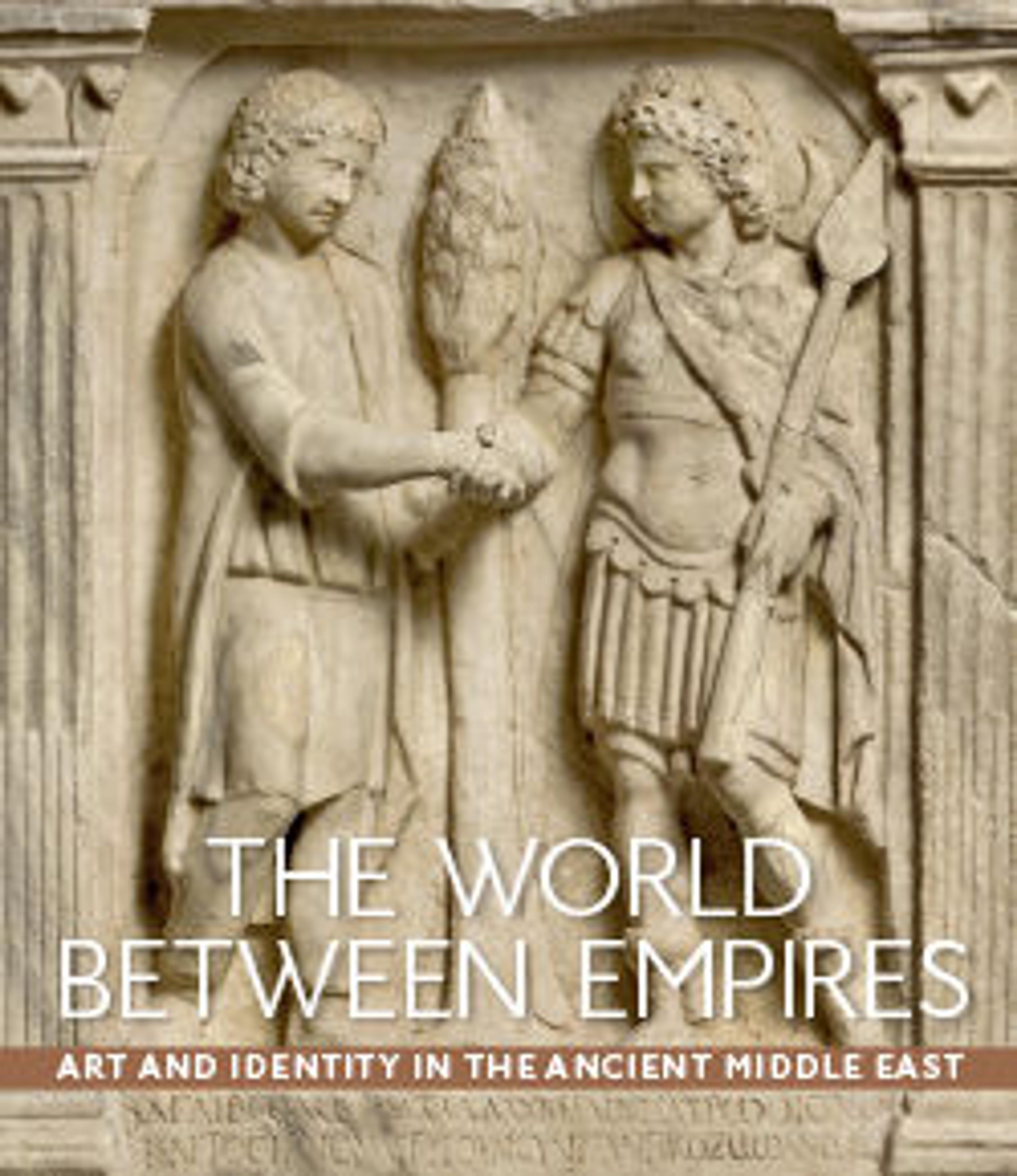Funerary relief
Inscription:
1-2 This image
3 (is of) Zabda‘ateh,
4 son of Zabda‘ateh,
5 which made for him
6 Wahba,
7 his brother.
8 Alas!
Transliteration:
1 npšʾ
2 dnh
3 zbdʿth
4 br zbdʿth
5 dy ʿbd lh
6 whbʾ
7 ʾḥwhy
8 ḥbl
This relief is a type of funerary monument characteristic of the prosperous caravan city of Palmyra during the first three centuries A.D. Reliefs with a representation of the deceased and a short identifying inscription were used to seal burial niches in elaborately decorated communal tombs; those with a half-length or bust format became prevalent sometime after A.D. 65.
Shown here is the upper body of a bearded man, in high relief against the background of a dorsalium (draped cloth) secured at both ends to leafy branches, who faces directly toward the viewer. To the left of his head, an inscription gives his name, his father’s name, and that of his brother, who set up this monument to his memory, ending with an expression of sorrow common on funerary reliefs at Palmyra. He is dressed in the Greek style, with a tunic worn under a himation, or cloak, which wraps around his right arm like a sling. The folds of these garments are regular and pattern-like, without a realistic sense of weight and volume. Likewise, his hands are simple blocky forms, without articulated joints or bone structure. He holds a small object, probably a schedula (book roll), in his left hand, and wears rings on the ring and little finger of that hand. His eyelids are carefully outlined, and downturned at both inner and outer corners. The iris of each large eye is indicated as an incised circle, and the pupils are drilled, underscoring the intensity of the gaze which is directed slightly up and far beyond the viewer. The eyebrows are marked with hatching. The man’s short hair is depicted as a mass of snail-like curls, ending above his protruding ears, while his beard is made up of separate wavy locks. Traces of red paint remain in the letters of the inscription and on his rings, and traces of black paint can be seen on the carved irises of the eyes. This relief can be stylistically dated to around 150-200 A.D. because of the figure’s beard, the treatment of the eyebrows and eyes, and the modeling of the himation, which lacks the semicircular folds found on earlier examples.
1-2 This image
3 (is of) Zabda‘ateh,
4 son of Zabda‘ateh,
5 which made for him
6 Wahba,
7 his brother.
8 Alas!
Transliteration:
1 npšʾ
2 dnh
3 zbdʿth
4 br zbdʿth
5 dy ʿbd lh
6 whbʾ
7 ʾḥwhy
8 ḥbl
This relief is a type of funerary monument characteristic of the prosperous caravan city of Palmyra during the first three centuries A.D. Reliefs with a representation of the deceased and a short identifying inscription were used to seal burial niches in elaborately decorated communal tombs; those with a half-length or bust format became prevalent sometime after A.D. 65.
Shown here is the upper body of a bearded man, in high relief against the background of a dorsalium (draped cloth) secured at both ends to leafy branches, who faces directly toward the viewer. To the left of his head, an inscription gives his name, his father’s name, and that of his brother, who set up this monument to his memory, ending with an expression of sorrow common on funerary reliefs at Palmyra. He is dressed in the Greek style, with a tunic worn under a himation, or cloak, which wraps around his right arm like a sling. The folds of these garments are regular and pattern-like, without a realistic sense of weight and volume. Likewise, his hands are simple blocky forms, without articulated joints or bone structure. He holds a small object, probably a schedula (book roll), in his left hand, and wears rings on the ring and little finger of that hand. His eyelids are carefully outlined, and downturned at both inner and outer corners. The iris of each large eye is indicated as an incised circle, and the pupils are drilled, underscoring the intensity of the gaze which is directed slightly up and far beyond the viewer. The eyebrows are marked with hatching. The man’s short hair is depicted as a mass of snail-like curls, ending above his protruding ears, while his beard is made up of separate wavy locks. Traces of red paint remain in the letters of the inscription and on his rings, and traces of black paint can be seen on the carved irises of the eyes. This relief can be stylistically dated to around 150-200 A.D. because of the figure’s beard, the treatment of the eyebrows and eyes, and the modeling of the himation, which lacks the semicircular folds found on earlier examples.
Artwork Details
- Title:Funerary relief
- Date:ca. 150–200
- Geography:From Syria, Palmyra
- Medium:Limestone
- Dimensions:20 5/8 × 15 1/8 × 7 5/8 in. (52.4 × 38.4 × 19.4 cm)
- Credit Line:Purchase, 1898
- Object Number:98.19.2
- Curatorial Department: Ancient West Asian Art
More Artwork
Research Resources
The Met provides unparalleled resources for research and welcomes an international community of students and scholars. The Met's Open Access API is where creators and researchers can connect to the The Met collection. Open Access data and public domain images are available for unrestricted commercial and noncommercial use without permission or fee.
To request images under copyright and other restrictions, please use this Image Request form.
Feedback
We continue to research and examine historical and cultural context for objects in The Met collection. If you have comments or questions about this object record, please contact us using the form below. The Museum looks forward to receiving your comments.
